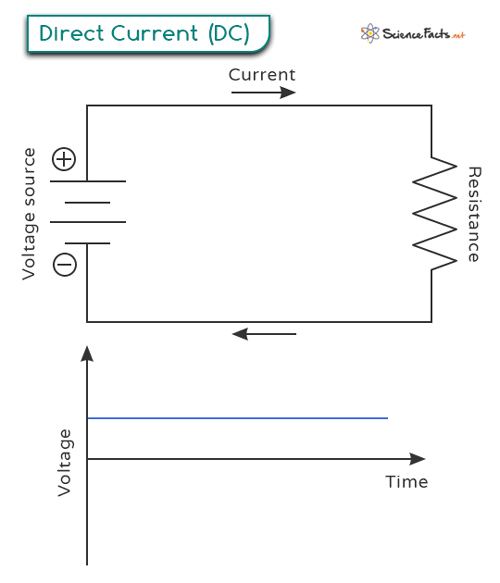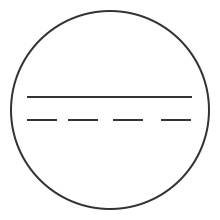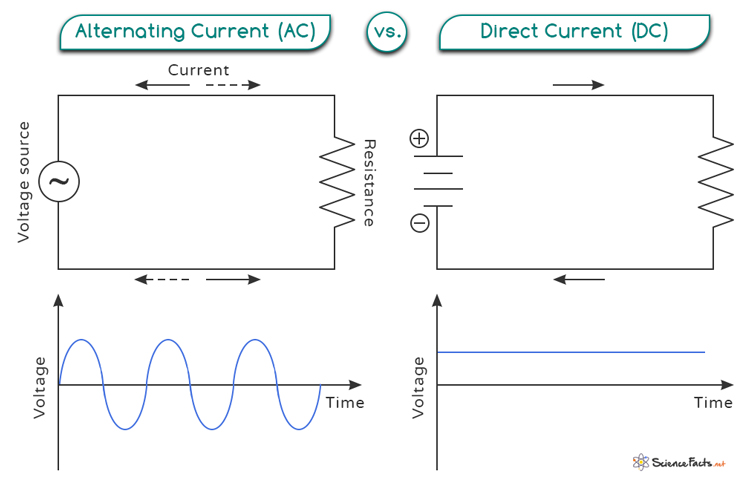Direct Current
Direct Current (DC) is a type of electric current that flows in only one direction. It is the opposite of Alternating Current (AC), which periodically changes direction. It is produced by sources such as batteries, fuel cells, and solar cells, which generate a steady flow of electrons in a single direction, especially from a region of high electron density to a region of low electron density. For example, in a battery circuit, direct current is due to the constant flow of electrons from the negative terminal to the positive terminal through the circuit.
Who Invented Direct Current
Thomas Edison, an American inventor, played a crucial role in popularizing direct current for practical applications. Edison is often associated with developing the direct current electrical system used for lighting and power distribution in the late 19th century. He designed and promoted direct current systems for electric lighting, establishing the first electric utility company in the United States.
Effect of Circuit Components on Direct Current Flow
When a direct current flows through a circuit, it encounters various components, such as resistors, capacitors, and inductors, all of which influence its behavior. Resistors restrict current flow. There is no continuous current flow through the capacitor, while the inductor offers almost no resistance to the constant current and acts like a short circuit.
Ohm’s Law and Direct Current
The flow of direct current is governed by Ohm’s Law, which states that the current (I) flowing through a conductor is directly proportional to the voltage (V) applied across it and inversely proportional to the resistance (R) of the conductor. This relationship can be represented by the equation I = V/R.
Direct Current Symbol
The symbol commonly used to represent direct current in electrical circuit diagrams is a horizontal straight line with a dashed line below it. Often, a circle encloses the two lines. The line represents the current flow, while the circle indicates the positive terminal of the DC source. This symbol is widely recognized and used in various electrical diagrams and schematics.
Examples of Direct Current in Everyday Life
Direct current has several applications in our everyday lives. Here are some examples:
- Household Appliances: Some household appliances, such as refrigerators, freezers, and air conditioners, use AC power from the mains but convert it to DC internally for specific components like control circuits and electronic boards. These appliances often have a built-in rectifier that converts the AC from the mains into DC.
- Battery-Powered Devices: Many devices, such as smartphones, tablets, laptops, flashlights, remote controls, and portable radios, rely on batteries for power. The batteries supply DC to operate these devices.
- Electronic Gadgets: Various electronic gadgets like digital cameras, MP3 players, and portable speakers operate on DC power. They often rely on rechargeable batteries or have adapters that convert AC to DC for charging.
- Automotive Applications: The electrical system in automobiles operates on both AC and DC. The battery supplies DC to start the engine and operate various components like lights, dashboard instruments, and audio systems.
- Solar Panels: Solar panels generate electricity powered by DC directly from sunlight through the photovoltaic effect. This DC power can be used to charge batteries or use inverters to convert DC into AC for home or commercial use.
- Electric Vehicles: Electric cars and bikes make extensive use of DC electricity. The batteries in these vehicles provide the necessary DC power to drive the motors, control systems, and other onboard electronics.
- Medical Devices: Many medical devices like pacemakers, defibrillators, hearing aids, and insulin pumps are powered by small internal batteries that provide electricity through DC.
Alternating Current vs. Direct Current
Both alternating and direct currents have their distinct advantages and applications. Understanding the differences between the two is essential for grasping the workings of electrical systems, from household appliances to industrial machinery. Here is a concise comparison table:
| Characteristic | Alternating Current (AC) | Direct Current (DC) |
|---|---|---|
| Direction of Current | Periodically changes direction | Flows constantly in one direction |
| Voltage Transformation | Easily transformed using transformers | Requires electronic circuitry for transformation |
| Efficiency | Efficient for long-distance transmission | Efficient for specific applications like electronics |
| Generation | Produced by alternators | Produced by batteries, fuel cells, and solar cells |
| Applications | Power distribution and household appliances | Electronics, batteries, and electric vehicles |
FAQs
Ans. Direct current is dangerous, especially in high-voltage circuits, and has the potential to cause serious harm.
Ans. Alternating current is widely used over direct current for several practical and technical reasons, which are attributed to its efficiency, transmission, and ease of voltage transformation.
-
References
Article was last reviewed on Friday, September 6, 2024











Great explanation of direct current! I found the examples really helpful for understanding its practical applications. The clarity on symbols also made it easier to follow along. Thanks for sharing!